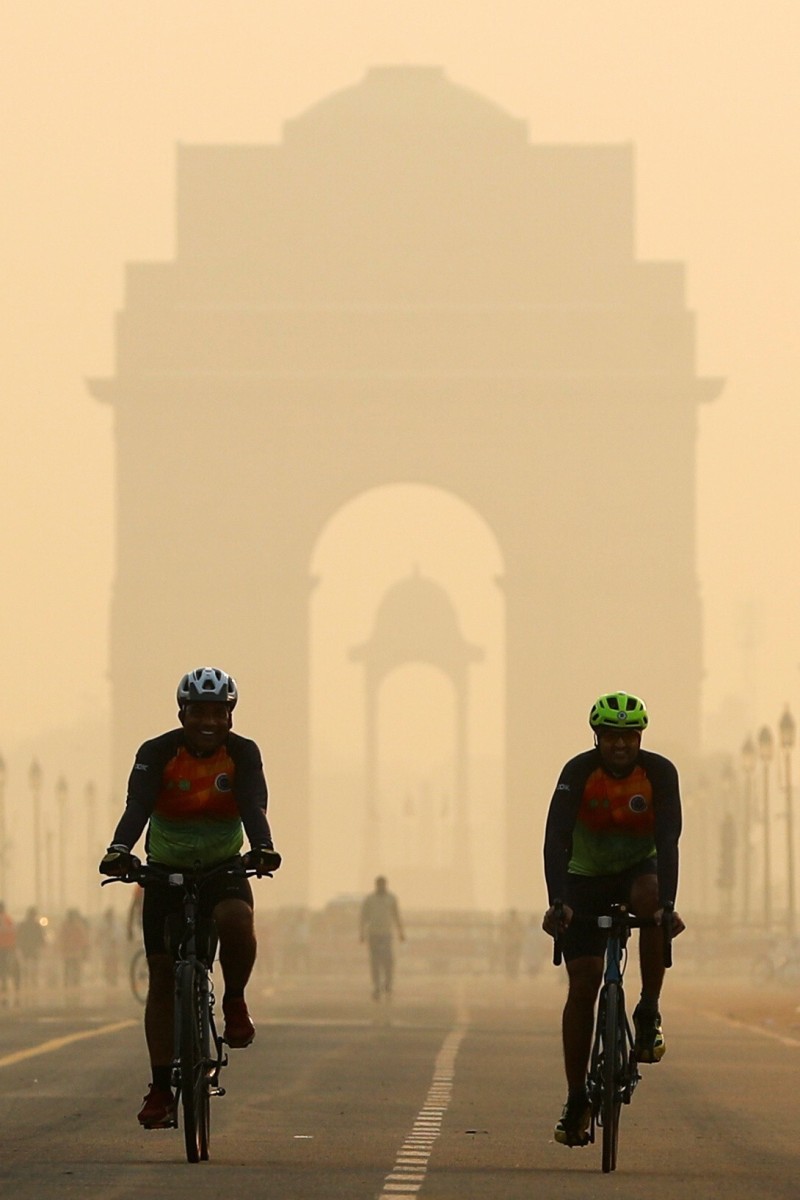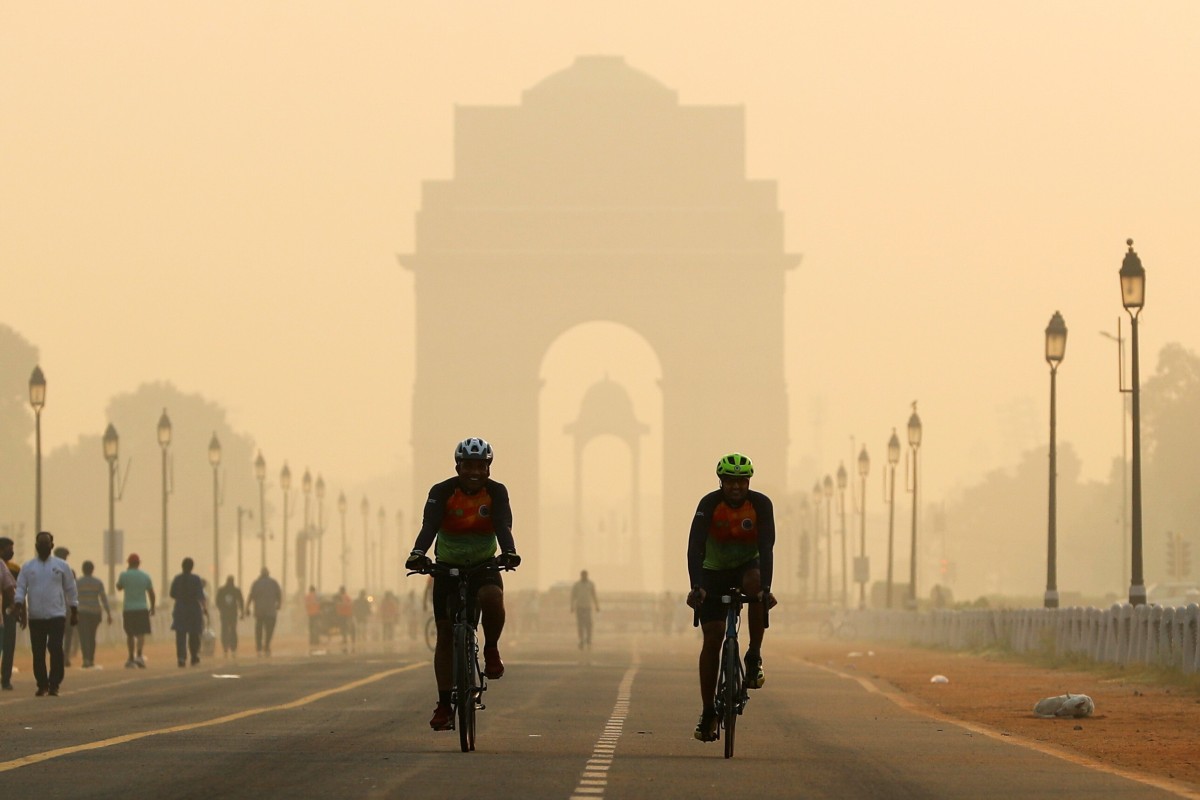
99 of the 100 cities most at risk environmentally are in Asia
- Around 80 per cent of the cities most vulnerable to environmental hazards, such as poor air and water quality, are in India or China
- Jakarta, Indonesia, which is dealing with pollution, flooding and heatwaves, tops the ranking
 Men ride their bicycles in front of the India Gate, shrouded in smog, in New Delhi, India. Photo: REUTERS
Men ride their bicycles in front of the India Gate, shrouded in smog, in New Delhi, India. Photo: REUTERSOf the 100 cities worldwide most vulnerable to environmental hazards, all but one are in Asia, and four-fifths are in India or China, according to a risk assessment published Friday.
Across the globe, more than 400 large cities with a total population of 1.5 billion are at “high” or “extreme” risk due to some mixture of life-shortening pollution, dwindling water supplies, deadly heat waves, natural disasters and climate change, the report found.
‘Survive the Century’ shows what ordinary people can do to fight climate change
The sinking megacity of Jakarta, Indonesia - plagued by pollution, flooding and heat waves, with worse to come - topped the ranking.
But India, home to 13 of the world’s 20 most risk-laden cities, may face the most daunting future of any country in the world.
Delhi ranks second on the global index of 576 cities compiled by business risk analysts Verisk Maplecroft, followed within India by Chennai (3rd), Agra (6th), Kanpur (10th), Jaipur (22nd) and Lucknow (24th).
Resources to help you learn more about climate change
Mumbai and its population of 12.5 million ranked 27th.
Looking only at air pollution - which causes more than seven million premature deaths worldwide each year, including a million in India alone - the 20 cities with the worst air quality in the world among urban areas of at least a million people are all in India.
The air pollution assessment was weighted towards the impact of microscopic, health-wrecking particles known as PM2.5, cast off in large measure by the burning of coal and other fossil fuels.
This photograph taken on February 25, 2020, shows flooded residential houses after heavy rains in Jakarta. Photo: AFP
China’s middle class
Outside Asia, the Middle East and North Africa have the largest proportion of “high risk” cities across all threat categories combined, but Lima, Peru is the only non-Asian city to crack the top 100.
“Home to more than half the world’s population and a key driver of wealth, cities are already coming under serious strain from dire air quality, water scarcity and natural hazards,” said the report’s lead author, Will Nichols.
“In many Asian countries, these hubs are going to become less hospitable as population pressures grow and climate change amplifies threats from pollution and extreme weather, threatening their role as wealth generators for national economies.”
We can no longer depend on the Amazon to absorb man-made pollution
While richer than India, China faces massive environmental challenges as well.
Thirty-five of the 50 cities worldwide most affected by water pollution are in China, as are all but two of the top 15 facing water stress, according to the report.
But different political systems and levels of development may ultimately play in China’s favour, Nichols said.
“For China, an emerging middle class is increasingly demanding cleaner air and water, which is being reflected in government targets,” he said.
Two-thirds of tropical rainforest lost worldwide
Africa hit hardest
“China’s top-down governance structure - and willingness to take abrupt measures, such as shutting down factories to meet emissions goals - gives it more of a chance of mitigating these risks.”
India’s weaker governance, coupled with the size and scale of its informal economy, makes it far harder to address environmental and climate issues at the city level.
Although Africa is the continent least responsible for global warming, it is set to be hit the hardest.
When it comes to global warming and its impact, the focus shifts sharply to sub-Saharan Africa, home to 40 of the 45 most climate-vulnerable cities on the planet.
The continent least responsible for rising global temperatures will get hit the hardest not only because of worse droughts, heat waves, storms and flooding, but also because it is so ill-equipped to cope.
What would encourage Hongkongers to recycle more?
“Africa’s two most populous cities, Lagos, Nigeria and Kinshasa, the Democratic Republic of Congo, are among those at highest risk,” the report noted.
The climate index combined the threat of extreme events, human vulnerability, and the ability of countries to adapt.